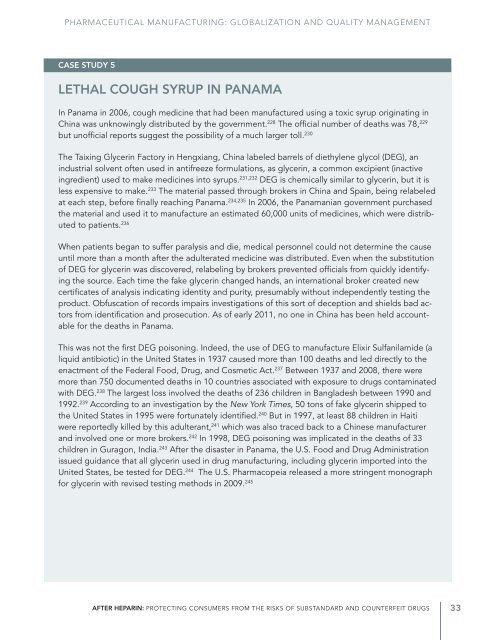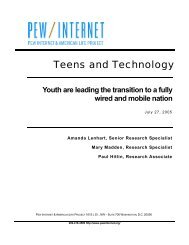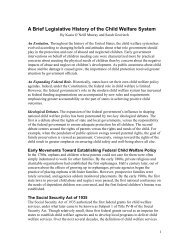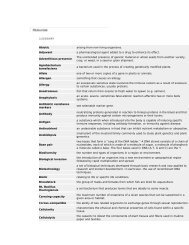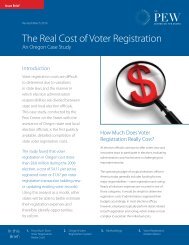After Heparin: - The Pew Charitable Trusts
After Heparin: - The Pew Charitable Trusts
After Heparin: - The Pew Charitable Trusts
You also want an ePaper? Increase the reach of your titles
YUMPU automatically turns print PDFs into web optimized ePapers that Google loves.
PHARMACEUTICAL MANUFACTURING: GLOBALIZATION AND QUALITY MANAGEMENT<br />
Case study 5<br />
Lethal cough syrup in Panama<br />
In Panama in 2006, cough medicine that had been manufactured using a toxic syrup originating in<br />
China was unknowingly distributed by the government. 228 <strong>The</strong> official number of deaths was 78, 229<br />
but unofficial reports suggest the possibility of a much larger toll. 230<br />
<strong>The</strong> Taixing Glycerin Factory in Hengxiang, China labeled barrels of diethylene glycol (DEG), an<br />
industrial solvent often used in antifreeze formulations, as glycerin, a common excipient (inactive<br />
ingredient) used to make medicines into syrups. 231,232 DEG is chemically similar to glycerin, but it is<br />
less expensive to make. 233 <strong>The</strong> material passed through brokers in China and Spain, being relabeled<br />
at each step, before finally reaching Panama. 234,235 In 2006, the Panamanian government purchased<br />
the material and used it to manufacture an estimated 60,000 units of medicines, which were distributed<br />
to patients. 236<br />
When patients began to suffer paralysis and die, medical personnel could not determine the cause<br />
until more than a month after the adulterated medicine was distributed. Even when the substitution<br />
of DEG for glycerin was discovered, relabeling by brokers prevented officials from quickly identifying<br />
the source. Each time the fake glycerin changed hands, an international broker created new<br />
certificates of analysis indicating identity and purity, presumably without independently testing the<br />
product. Obfuscation of records impairs investigations of this sort of deception and shields bad actors<br />
from identification and prosecution. As of early 2011, no one in China has been held accountable<br />
for the deaths in Panama.<br />
This was not the first DEG poisoning. Indeed, the use of DEG to manufacture Elixir Sulfanilamide (a<br />
liquid antibiotic) in the United States in 1937 caused more than 100 deaths and led directly to the<br />
enactment of the Federal Food, Drug, and Cosmetic Act. 237 Between 1937 and 2008, there were<br />
more than 750 documented deaths in 10 countries associated with exposure to drugs contaminated<br />
with DEG. 238 <strong>The</strong> largest loss involved the deaths of 236 children in Bangladesh between 1990 and<br />
1992. 239 According to an investigation by the New York Times, 50 tons of fake glycerin shipped to<br />
the United States in 1995 were fortunately identified. 240 But in 1997, at least 88 children in Haiti<br />
were reportedly killed by this adulterant, 241 which was also traced back to a Chinese manufacturer<br />
and involved one or more brokers. 242 In 1998, DEG poisoning was implicated in the deaths of 33<br />
children in Guragon, India. 243 <strong>After</strong> the disaster in Panama, the U.S. Food and Drug Administration<br />
issued guidance that all glycerin used in drug manufacturing, including glycerin imported into the<br />
United States, be tested for DEG. 244 <strong>The</strong> U.S. Pharmacopeia released a more stringent monograph<br />
for glycerin with revised testing methods in 2009. 245<br />
<strong>After</strong> <strong>Heparin</strong>: PRotecting Consumers from the Risks of Substandard and Counterfeit Drugs 33


